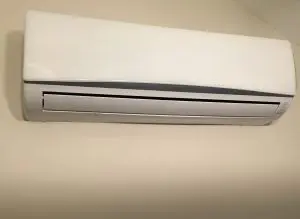Latest / Blog•Oct 16, 2015
Four Ways to Reduce Your Energy Usage this Winter
With the arrival of autumn’s cooler weather as a reminder that winter is just around the corner, now is the time to think about ways to reduce your heating energy usage. You’ll save money and reduce your carbon footprint at the same time. Here are four things to consider doing before winter arrives:
- Air sealing is one of the quickest and least expensive ways to reduce energy use. Many homes have lots of cracks and gaps that allow cold air to enter and create uncomfortable drafts. Most of the states in this region have low-cost programs that will bring in a home performance professional to do this work with specialized equipment that allows them to quickly locate and seal gaps as well as ensure that a home still gets a safe amount of fresh air. Contact your local utility to see what program offerings are available.
- Insulation can also dramatically lower heating costs. Insulation levels are generally assessed when air sealing is done. Attic
 insulation can pay for itself very quickly. Wall insulation is often more expensive, but is still usually a good investment for most homes. Often overlooked is basement insulation. Uninsulated basements are very common in New England and can waste a lot of energy. This waste can be dramatically reduced by either insulating basement walls or insulating the basement ceiling. In all cases make sure that proper air sealing is done in conjunction with the insulation.
insulation can pay for itself very quickly. Wall insulation is often more expensive, but is still usually a good investment for most homes. Often overlooked is basement insulation. Uninsulated basements are very common in New England and can waste a lot of energy. This waste can be dramatically reduced by either insulating basement walls or insulating the basement ceiling. In all cases make sure that proper air sealing is done in conjunction with the insulation. - Windows are often what individuals think of first when improving the efficiency of a home, but in many cases they cost a lot more than they save. If you have double pane or storm windows, you should probably consider upgrades first. However, if you are replacing your windows anyway for other reasons, be sure to get the highest efficiency you can, as the difference in price is typically not that great. Look for windows with the lowest “U factor” for the most savings.
- Heating Systems are typically replaced when the old one breaks. If yours is on its last leg, make sure you have a plan in place for replacing it with a high efficiency unit. If you’ve insulated and air sealed your home, chances are you can use a smaller and less expensive unit than the size you have now. Planning ahead will spare you from trying to make these decisions on a cold winter day
 when you have no heat. Another option to consider is adding a ductless heat pump, which will produce heat even on the coldest winter days at low cost and with a lower carbon footprint. In the summer it offers very efficient cooling as well.
when you have no heat. Another option to consider is adding a ductless heat pump, which will produce heat even on the coldest winter days at low cost and with a lower carbon footprint. In the summer it offers very efficient cooling as well.
Helpful links:
- Massachusetts: MassSave
- Connecticut: EnergizeCT
- Rhode Island: National Grid RI
- New Hampshire: Eversource NH
- Maine: Efficiency Maine
- Vermont: Efficiency Vermont
Jamie Howland leads Acadia’s  Climate & Energy Analysis Center (CLEAN), and Energy Efficiency and Demand Side Initiative. His work as a policy analyst focuses on data management on energy markets and emissions trends, buildings and land use issues.
Climate & Energy Analysis Center (CLEAN), and Energy Efficiency and Demand Side Initiative. His work as a policy analyst focuses on data management on energy markets and emissions trends, buildings and land use issues.


















